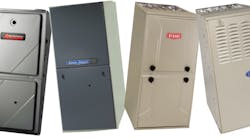Three Reasons Why DOE’s New Proposed Efficiency Standards Are So Wrong
Well, here we go again. The DOE (Department of Energy), just announced a new proposed rule to raise minimum national gas furnace efficiency standards to 92% AFUE.
To add some perspective, note that the original rule to increase the minimum standard from 78% to 80% AFUE was already set to go in effect this November. The new proposed rule will soon be published in the Federal Register. Once published, it will trigger a 90-day comment period. After the comment period, it goes to the Office of Management and Budget (OMB), for final rulemaking.
Should the proposed rule survive these steps, according to a settlement agreement reached last year between the HVAC industry and DOE, a new rule must be enacted by April 2016, with compliance to start in 2021.
How wrong is this idea? Here are three reasons just to get the conversation started:
1. Throwing the baby out with the bath water. Non-condensing 80% AFUE furnaces still make sense in southern climates where the higher efficiency of a condensing furnace usually doesn’t pencil out in terms of the increased equipment and installation costs.
The proposed standard could, in many cases, achieve the exact opposite of what the ruling intends: homeowners opting to replace their furnace with a heat pump, or worse, electric strip heat. When you take into account emissions from electricity production and transmission losses, this may create a bigger carbon footprint than the difference between installing an 80% and a 92%+ AFUE furnace.
The solution adds more cost for the homeowner, which may include replacing and/or relocating the water heater to a sidewall, or reconfiguring the original chimney to work with the stranded water heater.
2. Onerous installation costs. Even in northern states there are situations where a non-condensing furnace still makes the most sense. In some homes, the location of the equipment makes new venting and combustion air installation very costly, and sometimes impossible.
Costly obstacles include things like finished walls and ceilings, and distance from the equipment to an outside wall or roofline, beyond the manufacturer’s specs. This should be a market decision, not a blind regulatory mandate.
3. Stranded water heaters. When an original non-condensing furnace is removed from a shared chimney, the result is often a stranded water heater that may develop trouble venting. The solution adds more cost for the homeowner, which may include replacing and/or relocating the water heater to a sidewall, or reconfiguring the original chimney to work with the stranded water heater.
Need More Reasons?
There are many more reasons why forcing homeowners to buy ultra-high efficiency equipment is so wrong. For example, let’s say the installed cost difference between a non-condensing and a 92% AFUE furnace were $1,500 in a particular home.
Let’s say the air distribution system is fairly poor, delivering only 60% of the equipment’s BTUs into the conditioned space (the national average is 57%). This would make any real efficiency gains versus the 80% AFUE marginal — maybe a net 7%.
It would make more sense for this homeowner to invest $1,500 or more in improving the system, maybe raising delivered BTUs from 60% to 80% or more. In this example, the net energy savings and decrease in emissions would be triple that of just installing a 92% furnace on a poor delivery system.
Ironically, if for some reason this unnecessary and onerous legislation were to pass, the 92% AFUE minimum standard would indirectly help promote delivered system efficiency. How? Since gas utility companies aren’t allowed to incentivize minimum standards, to continue providing consumer incentives for energy efficiency, their programs would have to focus on “delivered” efficiency, which could save a lot more energy.
Even in markets with no incentives, if the rule were to be enacted, the only differentiator left for contractors would be renovating HVAC systems to sell higher delivered efficiency and improved comfort.
Notwithstanding these two arguments, which actually benefit performance-based service companies, the proposed efficiency standards are still a bad idea and should be challenged unanimously by our industry.
What can you do to get involved? Read the proposed rule and comment! The DOE held a meeting on March 27th which was broadcast as a webinar. You can read the proposed rule itself and post comments at bit.ly/ResFurnaceRule.
Dominick Guarino is CEO of National Comfort Institute (NCI), (www.nationalcomfortinstitute.com), one of the nation’s premier Performance-BasedTM training, certification, and membership organization, focused on helping contractors grow and become more profitable. His e-mail is domg@ncihvac.com. For more info on Performance-Based ContractingT™ go to WhyPBC.com or call NCI at 800/633-7058.









